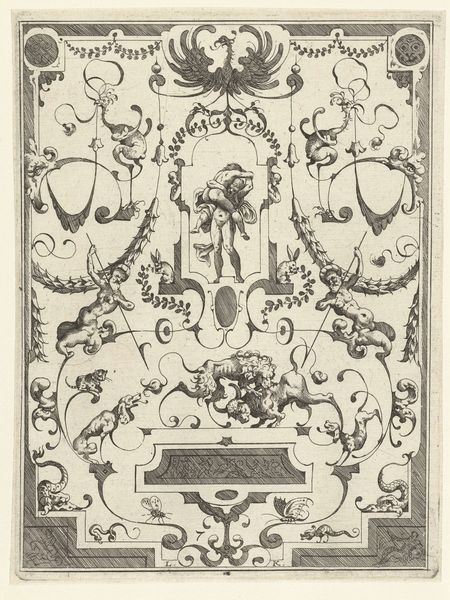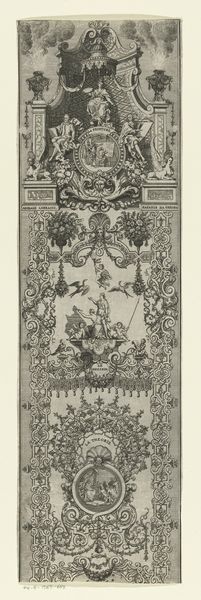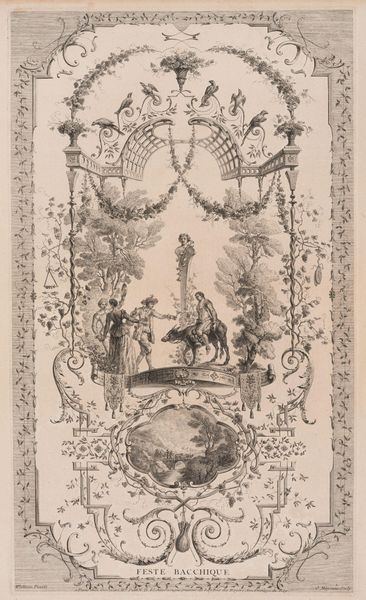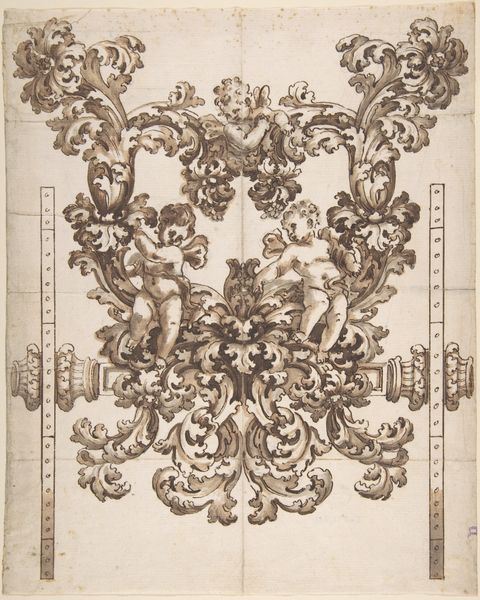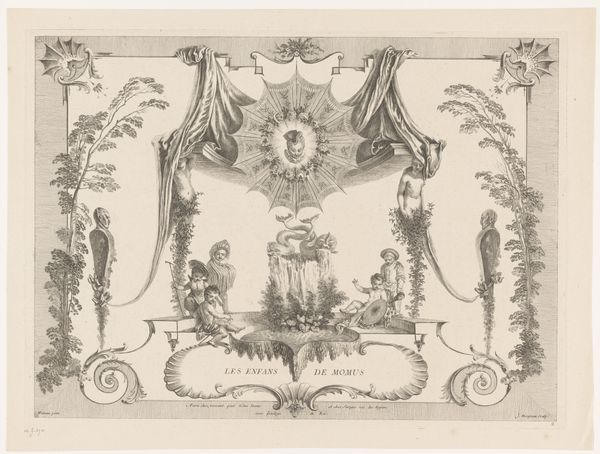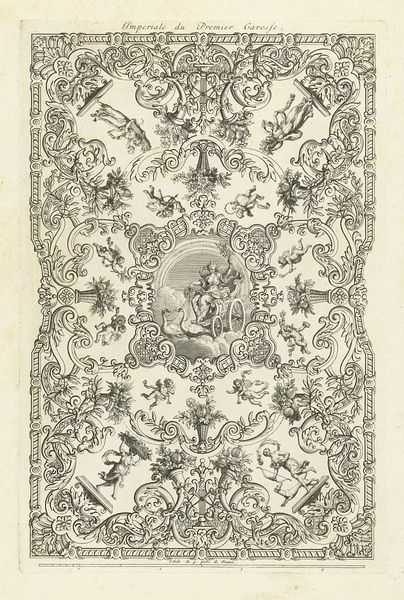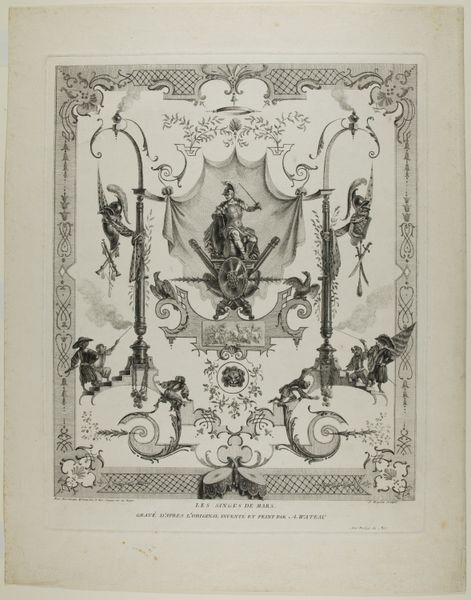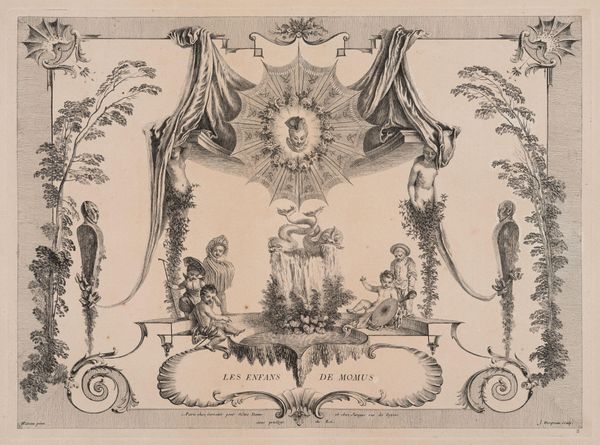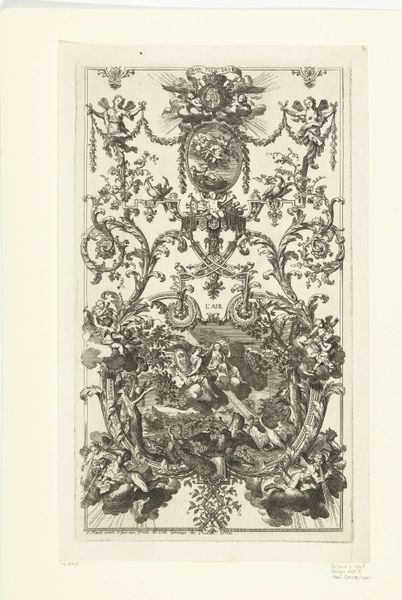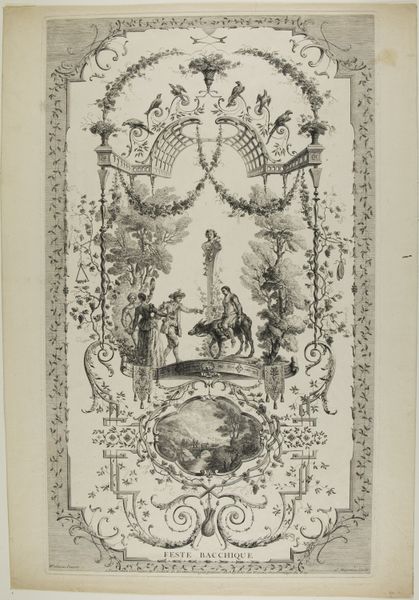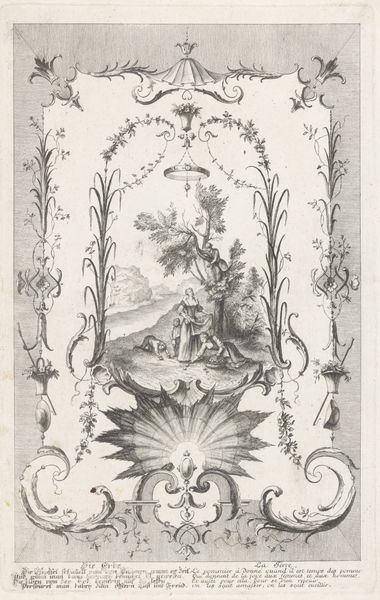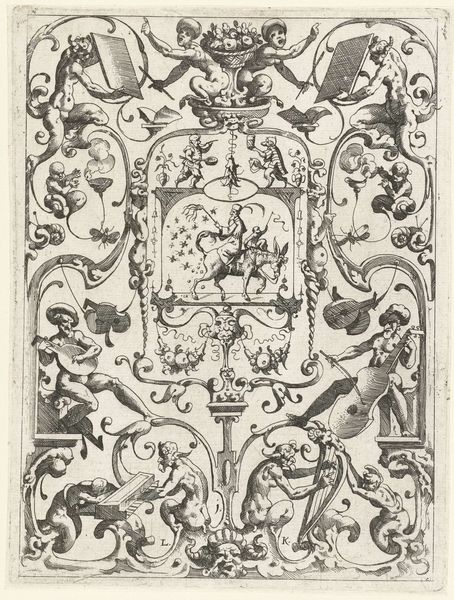
Dimensions: sheet: 62.5 Ã 46.5 cm (24 5/8 Ã 18 5/16 in.) plate: 46.9 Ã 37.4 cm (18 7/16 Ã 14 3/4 in.)
Copyright: CC0 1.0
Curator: Jean Moyreau's "The Monkeys of Mars" presents a fascinating image. It's an engraving on laid paper, part of the Harvard Art Museums' collection. Editor: My first thought? It's whimsical, yet also unsettling. Monkeys dressed in military garb playing out scenes of war feels like a pointed commentary. Curator: Absolutely. These singerie, or "monkeyeries," were popular in the 18th century, a way to satirize human folly through animal stand-ins. Moyreau created this engraving after a painting by Watteau. Editor: The composition is so elaborate, with a central figure on a cannon, and monkeys enacting various roles within this militaristic setting. It makes me wonder about the public's perception of power and authority at the time. Curator: Indeed. These images offered a safe space to critique societal structures, using humor to address potentially sensitive topics related to class and political power. Editor: And seeing it today, that satire still resonates. The choice of monkeys is so effective in highlighting the absurdity of conflict and human behavior. I wonder what this says about the role of art in societal critique. Curator: It reminds us that art often functions as a mirror, reflecting our own behaviors and beliefs back at us, prompting reflection and, hopefully, change. Editor: It really does, doesn't it? "The Monkeys of Mars" still manages to provoke and challenge our perspectives on conflict and human nature even after all this time.
Comments
No comments
Be the first to comment and join the conversation on the ultimate creative platform.
